Goddess Rati stands as the divine embodiment of love, passion, and sensual pleasure in Hindu tradition. Revered as the daughter of Prajapati Daksha and the eternal consort of Kama, the god of love, Rati symbolizes the purest forms of attraction and desire that bind souls together. Her name in Sanskrit signifies delight and enjoyment, reflecting her association with the joys of romance and intimate connection. Rati’s exceptional beauty and charm are celebrated in sacred texts, where she is depicted as enchanting even the god of love himself. She personifies the allure and pleasure of love, distinct from motherhood, and is honored for her ability to captivate hearts and foster deep, blissful unions. Her presence in mythology and temple art underscores her significance as the Venus of Hindu culture, representing the power and grace of feminine allure and the transformative energy of true devotion and companionship.
Who is Goddess Rati Devi?
Rati is the Hindu goddess who personifies love, passion, and sexual pleasure. She holds a significant position in the pantheon as the consort of Kama, the god of love. Her name means delight and enjoyment in Sanskrit, capturing her essence as the embodiment of sensuality and attraction. Rati is the daughter of Prajapati Daksha, which connects her to a prominent lineage among the gods. Her union with Kama makes her an integral part of the divine narratives surrounding love and desire, and her presence is often invoked in stories that explore the power of attraction and the joys of companionship.
Rati is closely associated with several symbolic elements. Her vehicle is the parrot, a bird often linked with love and romance in Hindu iconography. She is depicted holding a lotus, which represents beauty and purity, and a sword, symbolizing her strength and the power to protect love. These elements highlight her dual nature as both enchanting and formidable, embodying the pleasures of love while also standing as a guardian of its sanctity.
Significance of Maa Rati Devi
Rati holds deep philosophical and spiritual significance as the goddess who embodies love, beauty, and sexual pleasure. She represents the blissful union between lovers and the joy found in romantic companionship. On a spiritual level, Rati stands for the dynamic forces of rajas and tamas, symbolizing the passionate and active energies that drive desire and creation. Her association with Kama, the god of love, elevates her to a premier status among goddesses, making her a symbol of both the pleasures and transformative power of love. Rati’s presence in Hindu art, dance, and literature underscores her role as an icon of sensuality and the harmonious balance between physical and emotional fulfillment. Through her stories and symbolism, she encourages the acceptance of desire as a natural and essential aspect of life, reflecting the Hindu worldview that celebrates love and pleasure as integral to human experience and spiritual growth.
Rati’s importance is especially noted in regions and sects where the worship of Kama and rituals related to love and fertility are prominent. She appears in temple art and is invoked in rituals that seek harmony and affection in relationships. In some communities, Rati is honored alongside Kama during festivals and special occasions. One notable festival is celebrated in Hubballi, where idols of Kamadeva and Rati Devi are installed for five days, culminating in Ranga Panchami, a vibrant event marking the arrival of spring and the exuberance of love and colors. This celebration highlights her enduring cultural relevance and the continued reverence for her as a guardian of love and joy. Fridays and full moon days are considered especially auspicious for her worship, reflecting her association with feminine energy and the nurturing aspects of love.
Iconography & Symbolism
Rati is described as a goddess of striking beauty and allure. She possesses a fair, pale, and creamy complexion, glowing skin, big expressive eyes, long flowing dark hair, slim hips, a tiny waist, long legs, voluptuous thighs, and a radiant smile. Her physical features are crafted to captivate and enchant, embodying the very essence of sensuality and feminine charm. Rati is often depicted holding a sword, signifying her strength, and is shown riding a parrot, which serves as her vehicle and symbolizes love and romance. In some representations, she may also be seen riding a horse, reflecting her royal lineage as the daughter of Prajapati Daksha. The lotus she holds stands for beauty and purity.
In temple art and sculpture, Rati frequently appears alongside her husband Kama as a symbol of good fortune and prosperity. Their images adorn temple walls as welcome sculptures, emphasizing the auspiciousness of love and desire. Rati is also featured in wooden wall panels and paintings, sometimes enthroned on a parrot and surrounded by apsaras, highlighting her role as the embodiment of virtuous desire and fulfillment. Artistic depictions often present her in a dancing posture, adorned with intricate jewelry, hennaed fingers and toes, and a serene, smiling expression. She is a constant companion in scenes involving Kama, reinforcing her status as his lifelong consort and assistant in arousing love.
Rati’s color symbolism centers on her fair, creamy, and glowing skin, which conveys purity and allure. Her posture is typically graceful and enchanting, sometimes shown in dance or with one leg raised, exuding elegance and confidence. Mudras or hand gestures in her images often denote auspiciousness, with the right hand symbolizing her connection to the parrot. The combination of her posture, ornaments, and expressions in art underscores her identity as the goddess of love, beauty, and sensual pleasure, making her a captivating presence in Hindu iconography.
Origin of Goddess Rati
Rati’s origin is rooted in her identity as the daughter of Prajapati Daksha, a prominent progenitor in Hindu cosmology. Her creation is closely linked to the cosmic need for a force that embodies love and desire. When the gods sought to awaken Shiva from his deep meditation to restore balance in the universe, they needed the power of love, which led to the birth of Kama, the god of love, and Rati as his consort. Rati’s emergence thus aligns with the cosmic events that required the rekindling of passion and creation in the world.
Her story is woven through the Puranas and other scriptures, where she is described as an incarnation of desire and pleasure. In the aftermath of Kama’s incineration by Shiva’s third eye, Rati’s devotion and penance are pivotal. She pleads for Kama’s restoration, and her unwavering love leads to his rebirth as Pradyumna, the son of Krishna and Rukmini, as narrated in the Puranas. This cycle of loss and reunion highlights Rati’s deep connection to the cosmic play of creation, destruction, and renewal. Her presence in these scriptures underscores her importance not only as a goddess of love but also as a symbol of hope, perseverance, and the eternal nature of desire within the cosmic order.
Legends and Stories
One prominent story describes her miraculous birth. After Bhagwan Brahma created Kama, the god of love, Prajapati Daksha was instructed to find Kama a suitable wife. During a moment when Brahma and the Prajapatis were struck by desire for Brahma’s daughter Sandhya, Shiva observed and laughed at their embarrassment. Daksha began to sweat from shame, and from his perspiration emerged the beautiful Rati, who was then given to Kama as his consort. This origin story establishes her as a divine embodiment of sensual delight and sets the foundation for her role alongside Kama.
Another tale focuses on the tragic episode of Kama’s incineration by Shiva. When Shiva went into deep penance after Sati’s death, the demon Tharkasura terrorized the universe, and only Shiva’s son could defeat him. The gods sent Kama, accompanied by Rati and Vasanta, to awaken Shiva’s desire for Parvati. Kama succeeded but was burned to ashes by Shiva’s third eye. Grief-stricken, Rati covered herself in Kama’s ashes and performed intense penance, pleading for his return. Parvati assured her that Kama would be reborn as Pradyumna, son of Krishna and Rukmini, and advised Rati to wait for him in the house of the demon Sambara.
The story continues with Rati incarnating as Mayavati, a kitchen maid in Sambara’s palace. When Sambara tried to thwart the prophecy by casting baby Pradyumna into the ocean, the child was swallowed by a fish, caught by fishermen, and brought to Sambara’s kitchen. Mayavati discovered and raised the child, and with guidance from the sage Narada, revealed their true identities. As Pradyumna matured, Mayavati’s maternal affection transformed into the love of a wife, and she taught him the arts of war and magic. Pradyumna eventually defeated Sambara and returned to Dwarka with Mayavati, resuming their roles as Kama and Rati and living together for thousands of years.
An additional anecdote highlights Rati’s transformation from plainness to extraordinary beauty. Once, Rati was unable to attract any suitors and became despondent. Goddess Lakshmi took pity on her and taught her the art of Solah Shringar, the sixteen adornments of beauty. This transformed Rati into the most captivating woman in all realms, enchanting Kama and securing her place as his consort. This story connects Rati’s allure to the blessings of Lakshmi and the tradition of feminine adornment.
Together, these legends portray Rati as a symbol of passionate devotion, resilience, and the transformative power of love and beauty.
Spiritual Lessons from Maa Rati Devi
Rati’s tales offer profound moral and spiritual lessons centered on the enduring power of love, the strength of devotion, and the transformative nature of sacrifice. Her unwavering commitment to Kama, even after his destruction by Shiva, demonstrates that true love persists through suffering and loss. Rati’s penance and patience ultimately lead to Kama’s rebirth, teaching that steadfast devotion and resilience can overcome even the gravest adversity. This highlights the idea that love is not merely an emotion but a force capable of inspiring hope, renewal, and restoration.
These stories also emphasize the duality of love, showing that it brings both joy and sorrow, creation and destruction. Rati’s journey reflects the acceptance of desire and passion as integral to human experience, encouraging individuals to embrace these aspects without shame. Spiritually, her narrative symbolizes the soul’s quest for union, where love acts as both the path and the goal, leading to higher understanding and spiritual awakening. Rati’s example inspires the recognition that love’s sacrifices and trials are essential for growth, connection, and the realization of deeper truths in life.
Puja Vidi at Home
Required Materials
- Idol or image of Goddess Rati
- Clean cloth (colorful for goddess)
- Plate or altar
- Gangajal (holy water) and fresh water
- Flowers and flower garlands
- Incense sticks and dhoop
- Oil or ghee lamp (diya)
- Sandal paste, kumkum, haldi, abir, gulal, gopi chandan
- Unbroken rice (akshata)
- Fruits, sweets, dry fruits, betel nuts, betel leaves, candy sugar, clove, cardamom
- Holy thread
- Prasad (food offering)
- Soft cloth for wiping the idol
Step-by-Step Home Puja Guide
- Take a bath and wear clean clothes. Sit peacefully in front of the image or idol of Goddess Rati.
- Purify your mind and the space around you. Place the idol or image on a plate or altar covered with a colorful cloth.
- Fill a pot with water and add a few drops of Gangajal. Place it in front of the altar with a smaller tumbler for dispensing water.
- Offer water to the deity while chanting her name or mantra.
- Offer a small amount of gomutra and honey, then again offer water mixed with Gangajal.
- Wipe the idol with a soft cloth and place it back on the altar.
- Apply tilak using sandal paste, kumkum, haldi, abir, gulal, gopi chandan, and a few rice grains.
- Light incense sticks and a diya, directing the smoke toward the altar.
- Offer flowers and garlands to the goddess.
- Offer fruits, sweets, dry fruits, betel nuts, candy sugar, clove, cardamom, and prasad.
- Tie a holy thread around your hand as a mark of devotion.
- Wave the oil lamp (aarti) in a clockwise direction before the deity.
- Chant mantras, shlokas, or stutis dedicated to Goddess Rati.
- Circumambulate the altar, seek forgiveness for any mistakes, and offer your final prayers.
- Distribute and consume the prasad with family and friends.
Chanting and Aarti Process
During aarti, wave the diya in a circular motion in front of the idol while singing the aarti song. The flame absorbs the goddess’s blessings, which are then passed to devotees as they cup their hands over the flame and touch their forehead.
Conclude with a final prayer and distribute the prasad as a mark of divine blessing.
Mantra Dedicated to Goddess Rati
Om Kleem Ratidevayai Namah
Meaning:
Salutations to Goddess Rati, the divine embodiment of love and pleasure.
Benefits:
Chanting this mantra helps attract harmony and bliss in married life, enhances charm, and strengthens the bond between partners. It improves compatibility, physical and mental satisfaction, and bring overall happiness in relationships.
Benefits of Worshipping Goddess Rati
Worship of Goddess Rati brings a blend of spiritual, mental, and material benefits. Spiritually, it fosters deeper love, compassion, and emotional fulfillment, opening the heart to harmonious relationships and inner peace. Devotees experience a sense of joy and satisfaction in their partnerships, as Rati’s blessings dissolve conflicts and enhance mutual understanding. On a mental level, worship helps reduce anxiety and insecurity related to relationships, promoting confidence, self-worth, and emotional stability. Materially, it is thought to bestow beauty, charm, and personal magnetism, improving one’s ability to attract love and maintain a fulfilling married life.
Most important benefits include:
- Leads to a blissful and harmonious married life
- Improves compatibility and companionship between partners
- Enhances physical and mental satisfaction in relationships
- Bestows beauty, charm, and personal magnetism
- Promotes emotional fulfillment and joy
- Resolves conflicts and fosters mutual understanding
- Opens the heart to deeper love and compassion
- Increases attraction and intimacy between couples
- Helps in overcoming relationship insecurities and anxieties
- Supports overall happiness and prosperity in family life
Temples Dedicated to Goddess Rati
Temples and institutions dedicated to Rati Devi are often linked with her consort Kamadeva, reflecting their inseparable presence in Hindu worship and iconography. Rati is a central figure in temple art, usually portrayed alongside Kama as a symbol of love, prosperity, and good fortune. These depictions serve not only as spiritual icons but also as welcome sculptures on temple walls, emphasizing the auspiciousness of love and harmonious union. The architecture of temples associated with Rati and Kama often features intricate carvings, sensuous motifs, and vibrant imagery that celebrate the divine aspects of desire and attraction. Historically, these temples date back centuries and are important for their artistic as well as spiritual contributions, with some sites showcasing unique wooden and mud idols crafted for annual festivals.
Major temples dedicated to Rati Devi in India include the Kameshwara Temple in Aragalur, where local tradition holds that Kamadeva awakened Shiva at this site, and the Kameshvara Temple in Kamyavan, one of the twelve forests of Vrindavana. The Soundaraja Perumal Temple at Thadikombu in Tamil Nadu features a separate shrine for Kamdev and Rati, highlighting their significance in the region. In Assam, the Madan Kamdev Temple near Guwahati stands out for its architectural grandeur and historical depth, with ruins dating back to the 9th and 10th centuries. This temple complex is renowned for its elaborate sculptures depicting divine love and passion, and it remains a major pilgrimage site for devotees seeking blessings for love and marital harmony. The Khajuraho temples in Madhya Pradesh, though not exclusively dedicated to Rati, are globally celebrated for their intricate carvings that portray various aspects of love and passion, embodying the spirit of Rati and Kama in temple art.
Festivals and pilgrimages linked to Rati Devi are especially prominent during Holi and Vasant Panchami, which celebrate love, fertility, and the arrival of spring. In Hubballi and Dharwad, Karnataka, vibrant public installations of Kamadeva and Rati idols draw large crowds during Holi, with rituals, processions, and cultural festivities that have been maintained for over a century. These events include the installation of beautifully crafted wooden and mud idols, community prayers, and the symbolic burning of effigies, all underscoring Rati’s enduring cultural and religious significance. Annual pilgrimages to temples like Madan Kamdev and participation in these regional festivals continue to keep Rati Devi’s legacy alive, attracting devotees from across India and beyond.
Presence in Other Traditions
Rati’s influence extends beyond Hinduism, finding a place in both Buddhism and Jainism as well as in Southeast Asian traditions. In Buddhism, Rati is recognized as one of the emanations of Lakshmi, symbolizing pleasure and enjoyment. She appears among the sixty-four mātṛs worshipped in Shakta rituals and is regarded as a Kaula consort in Tantric practices, embodying the divine feminine energy that supports spiritual liberation. This presence highlights her role not just as a goddess of sensual pleasure but also as a force for transcending material bonds through the transformative power of desire. In Jainism, Rati represents relational pleasure and attraction, personified as the beloved of Kusumayudha and paralleling the affectionate relationships found in Jain narratives. Here, she embodies quasi-passion, suggesting that even within ascetic traditions, the concept of love and attraction is acknowledged as a natural aspect of human experience. In Southeast Asia, particularly in regions influenced by Indian culture, Rati’s archetype merges with local traditions, contributing to the artistic and ritual depictions of love goddesses and reinforcing her universal appeal as a symbol of beauty and desire.
Comparative mythology reveals striking parallels between Rati and love goddesses from other cultures, most notably Aphrodite from Greek mythology. Both are revered as embodiments of love, desire, and beauty, and are often depicted as enchanting figures who inspire passion and romantic attraction. While Rati is the consort of Kamadeva, Aphrodite is linked to various gods and mortals, reflecting the central role of love in both traditions. However, their mythological origins and cultural significance differ: Rati’s stories are deeply rooted in Hindu cosmology and rituals, whereas Aphrodite’s narratives span themes of fertility, beauty, and the sea. These similarities and differences underscore the universal human fascination with love and the diverse ways it is celebrated and conceptualized across civilizations.
Rudra Centre’s Rati Devi Puja Services
Kamdev Rati Vashikaran Puja – 11000 chants
A Vedic ritual invoking Kamadeva and Rati to attract a specific person or improve harmony in relationships, featuring 11000 mantra chants, yantra worship, and yagna. Includes live participation options and delivery of prasad and energized items.
Kamdev Rati Vashikaran Night Puja
A powerful night-time ritual for invoking the combined blessings of Kamadeva and Rati, focused on attraction, personal magnetism, and relationship harmony. Includes mantra chanting, yantra pujan, and live streaming, with prasad and spiritual items sent after the ritual.
Conclusion: The Divine Catalyst of Passion, Power, and Eternal Love
Maa Rati Devi stands as the eternal symbol of love’s power, beauty, and transformative energy. Her presence in Hindu tradition is not just a celebration of sensual pleasure but a testament to the enduring strength of devotion, resilience, and hope. As the divine consort of Kamadeva, she inspires harmonious relationships, emotional fulfillment, and the acceptance of desire as a sacred force in life. Rati’s stories and worship reveal that true love transcends obstacles, renews the spirit, and brings lasting joy. Embracing her blessings means welcoming harmony, confidence, and the vibrant flow of affection into every aspect of existence, making her legacy timeless and universally relevant.


-in-Astrology.jpg)
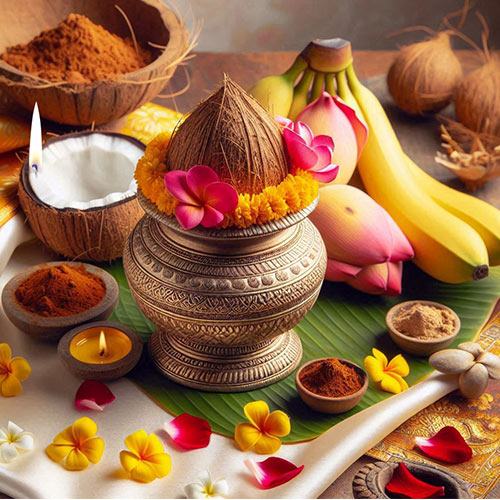

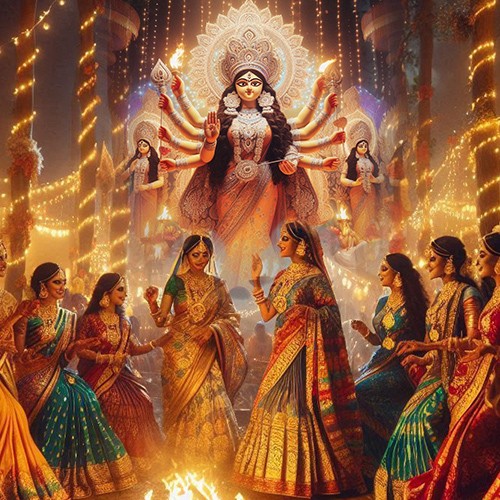
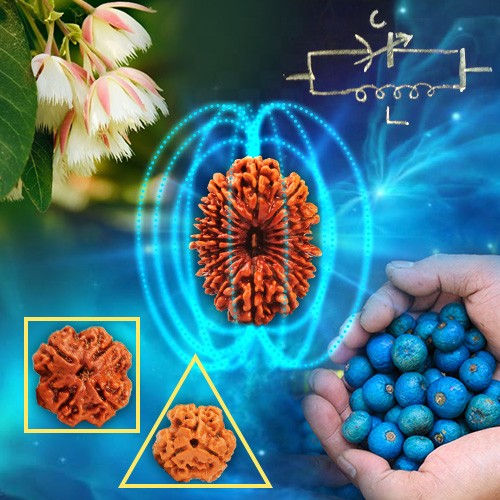

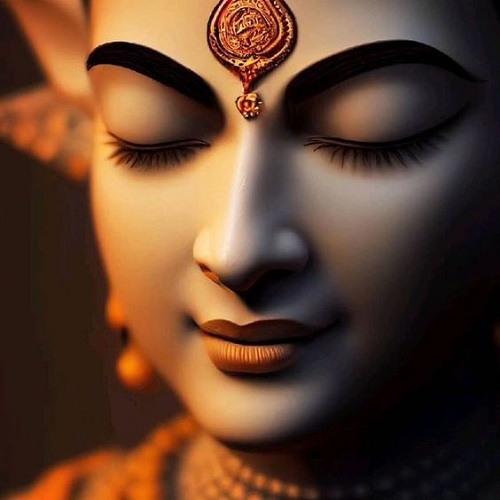
.jpg)
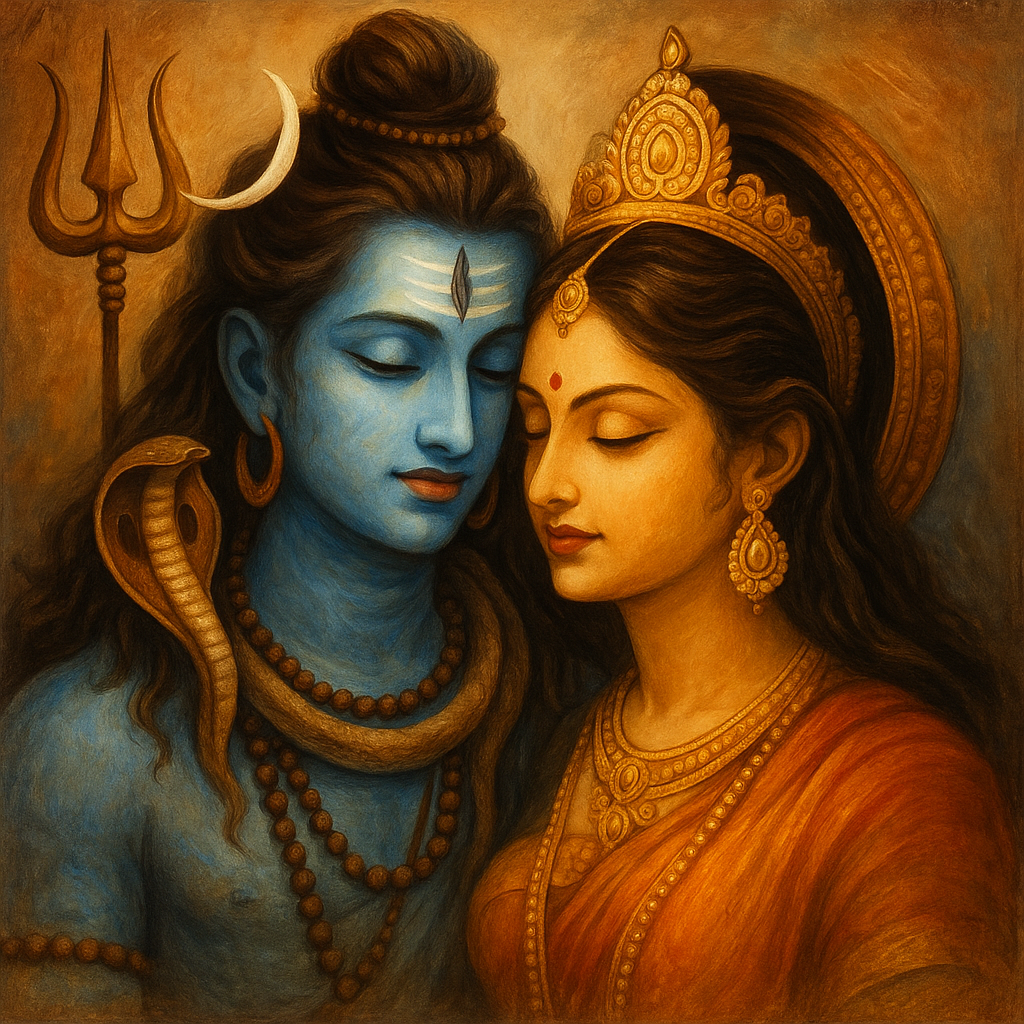
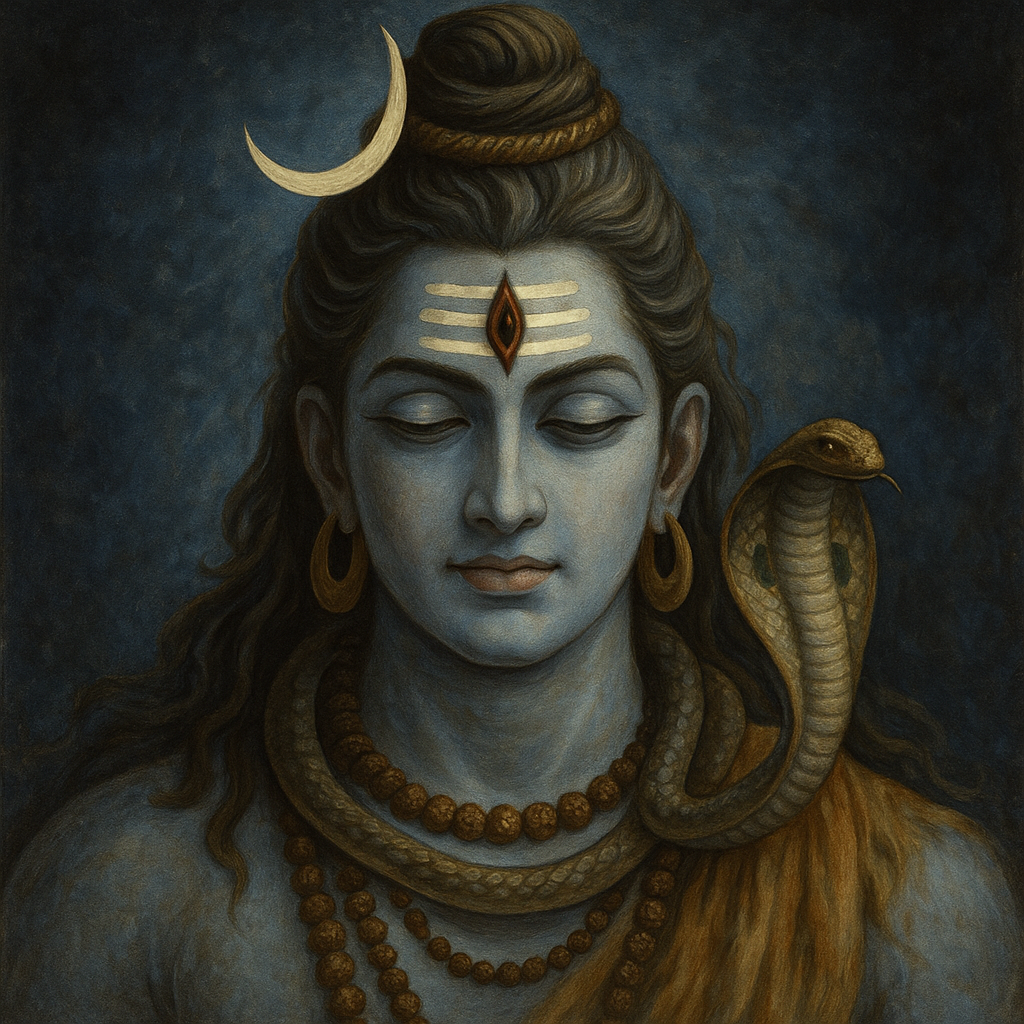
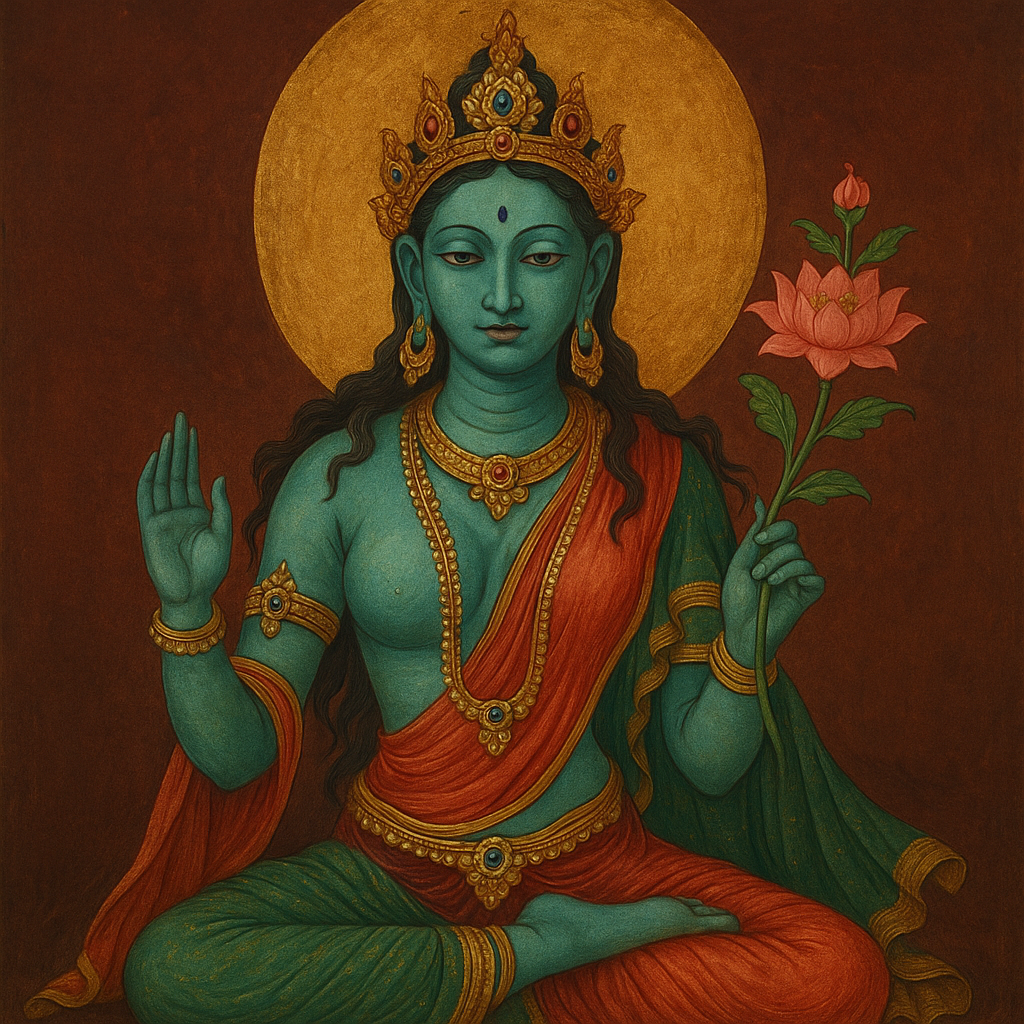
Comments 0
Leave your thought here